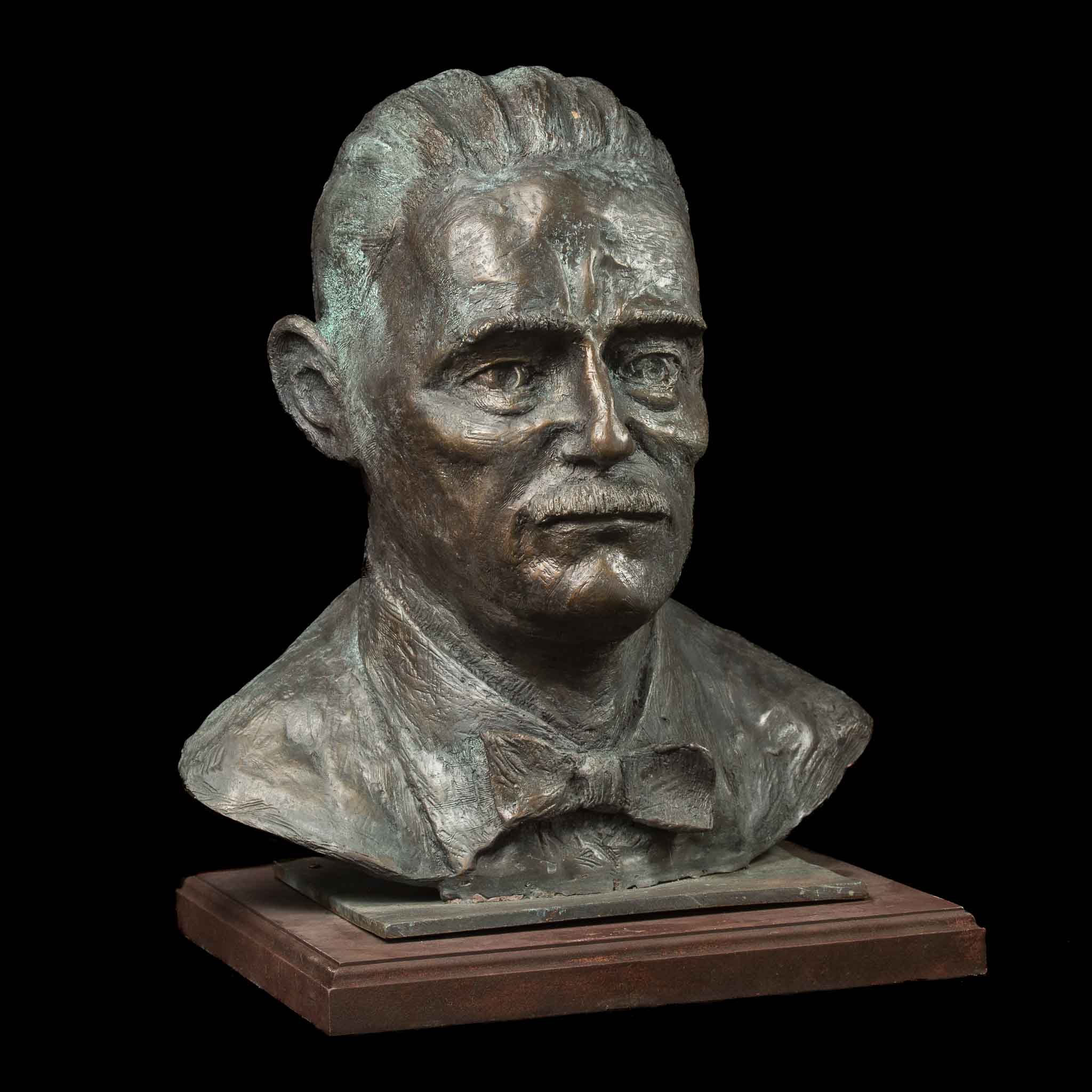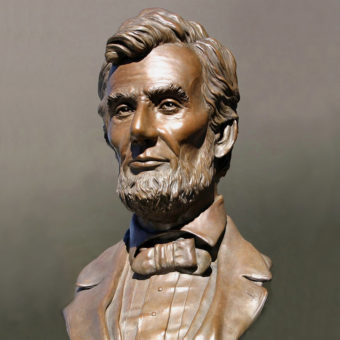Poise in Motion: Discover the Elegance of Equine Sculptures
Wiki Article
The Development of Sculptures: From Old to Modern
The Evolution of Sculptures: From Ancient to Modern. Robert C Hitchcock Sculptor.Sculpture, one of the oldest types of art, has actually been an indispensable component of human people for centuries. From the old people of Egypt and Greece to the modern-day age, sculptures have advanced, mirroring changes in artistic techniques, materials, and cultural influences. This journey via time traces the development of sculptures, discovering the changes in vogue, subject matter, and artistic expression.
Starting with the ancient world, sculptures crafted from rock and later bronze recorded the essence of deities, rulers, and daily life. The Renaissance duration experienced a resurgence of classical sculpting techniques, as musicians sought to imitate the elegant kinds of old Greek and Roman sculptures (Portrait Sculptor). In the contemporary era, musicians tested conventional boundaries, embracing abstraction and experimentation with brand-new products
This expedition will delve right into the varied advancement of sculptures, disclosing the abundant tapestry of creative expression throughout various durations and cultures.

Ancient Sculptures: From Rock to Bronze
Old sculptures transitioned from being taken of rock to being cast in bronze. This shift marked a substantial advancement in the art of sculpture, allowing for better refinement and detail in the ended up works. Stone sculptures, while excellent in their very own right, were restricted by the nature of the product. Rock required extensive carving and forming, often leading to a much more streamlined representation of the topic.The intro of bronze as a tool for sculptures caused a revolution in artistic expression. Bronze used sculptors the chance to produce elaborate and realistic types that were not possible with rock. The process of casting bronze allowed for the creation of several duplicates of a sculpture, allowing wider distribution and conservation of these creative work of arts.
The shift from stone to bronze also saw a shift in the subject of sculptures. While stone sculptures mainly shown gods, sirens, and mythological figures, bronze sculptures began to reflect a more comprehensive range of subjects, consisting of daily individuals and animals. This development of topic showcased the versatility and flexibility of the bronze tool.
Renaissance Revival: Shaping in the Timeless Style
The Renaissance revival of sculpture witnessed a rebirth in the timeless design, building upon the improvements made throughout the transition from rock to bronze in ancient sculptures. During this duration, artists sought to recreate the classical visual and perfects of elegance that were widespread in old Greek and Roman sculptures.One of the crucial features of the Renaissance resurgence was the emphasis on naturalism and the human kind. Sculptors like Donatello and Michelangelo make every effort to catch the anatomical details and expressions of their topics with extraordinary accuracy. They examined the body and incorporated their monitorings right into their sculptures, resulting in realistic and natural representations.
Another essential aspect of the Renaissance revival was the exploration of viewpoint and deepness. Musicians made use of methods such as contrapposto, where the weight of the body is moved to one side, creating a feeling of motion and dynamism. They additionally trying out different products, consisting of marble and bronze, to attain a degree of elegance and intricacy in their sculptures.

Modernism and the Avant-Garde: Damaging Typical Boundaries
Throughout the Modernism and Avant-Garde motions, sculptors pushed the limits of standard imaginative conventions. This period, which emerged in the late 19th and very early 20th centuries, saw a dramatic change in the way artists came close to sculpture. Turning down the idea of art as plain imitation, modernist sculptors sought to check out brand-new forms, products, and principles.
Among the essential features of modernist sculpture was the emphasis on abstraction. Artists relocated far from reasonable depictions and rather concentrated on recording the significance of the subject via streamlined types and geometric shapes. This separation from standard representation permitted artists to share their feelings and ideas in a much more individual and subjective fashion.

Contemporary Sculptures: Checking Out New Materials and Concepts
With a focus on checking out new products and concepts, modern sculptures have revolutionized the area of art. Artists today are pressing the limits of typical sculpture by using ingenious products and trying out with abstract ideas. These sculptures test conventional concepts see it here of kind, materiality, and definition, welcoming viewers to engage in a provocative and brand-new creative experience.Contemporary carvers are accepting a vast array of products, consisting of plastic, glass, steel, and even raw material. They are not restricted to the standard tool of rock or clay, enabling higher civil liberty and testing. This shift towards unconventional materials has opened brand-new possibilities for artists to create sculptures that are vibrant, interactive, and aesthetically striking.
Along with exploring new materials, contemporary sculptures likewise dig into facility and abstract concepts. Artists are currently discovering styles such as identity, social problems, and the atmosphere, utilizing sculpture as a powerful tool for social discourse and self-contemplation. These sculptures test viewers to believe seriously and engage with art on a much deeper degree, triggering discussions and provoking emotional feedbacks.
International Impacts: Sculptural Customs From Around the World
Sculptural practices from numerous regions of the globe have dramatically shaped the evolution of sculptures throughout background. The international impacts on sculpture have varied and have added to the richness and variety of creative expressions. From the old human beings of Egypt, Greece, and Rome to the elaborate carvings of Asian cultures, each area has created its special sculptural traditions that have affected artists throughout time.In old Egypt, sculptures were developed mostly for funerary and spiritual functions. The renowned sculptures of gods and pharaohs, such as the Great Sphinx and the breast of Queen Nefertiti, showcase the Egyptians' proficiency of rock sculpting and their belief in the immortality.

In old Rome, sculpture served both political and artistic functions. Roman sculptures frequently portrayed emperors, generals, and mythical numbers, mirroring the power and grandeur of the realm. The marble sculpture of Augustus of Prima Porta and the huge Arch of Constantine are significant examples of Roman sculptural achievements.
Eastern sculptural traditions, particularly in India, China, and Japan, have also had an extensive effect on the advancement of sculptures. Indian sculptures, such as the delicately carved temples of Khajuraho and the gigantic statues of Buddha, exhibit an abundant combination of religious, mythical, and architectural components. Chinese sculptures, defined by their great craftsmanship and attention to detail, frequently depict divine beings, pets, and famous figures. Japanese sculptures, affected by Buddhism, highlight simpleness and harmony, seen in the calm sculptures of Buddha and the sophisticated art of bonsai.
The international influences on sculpture continue to progress in the modern-day era. As we look to the future, it is particular that the worldwide influences on sculpture will proceed to form and redefine this old art kind.
Conclusion
In final thought, the evolution of sculptures has seen a change from old stone and bronze functions to the timeless revival during the Renaissance. Today, contemporary sculptures explore brand-new materials and principles, while likewise drawing inspiration from global sculptural practices.From the old worlds of Egypt and Greece to the contemporary age, sculptures have progressed, mirroring adjustments in creative strategies, materials, and cultural impacts.Starting with the ancient world, sculptures crafted from stone and later bronze caught the essence of deities, rulers, and everyday life.Old sculptures transitioned from being carved out of stone to being cast in bronze. While stone sculptures primarily shown gods, goddesses, and mythological figures, bronze sculptures started to mirror a more comprehensive range of topics, consisting of everyday individuals and animals.In final thought, the development of sculptures has actually seen a change from old stone and bronze works to the timeless revival throughout the Renaissance.
Report this wiki page